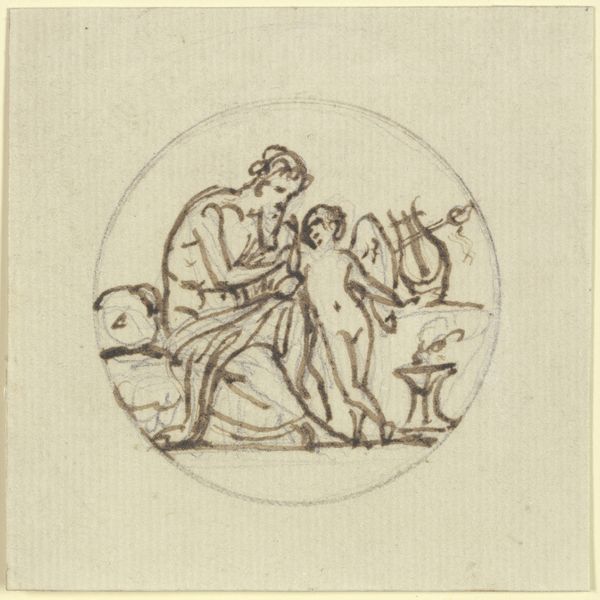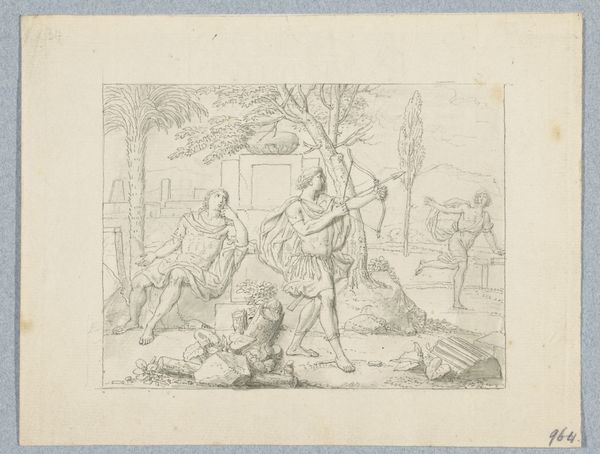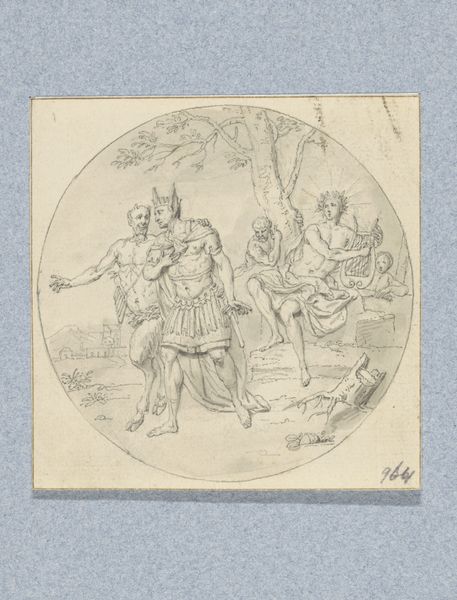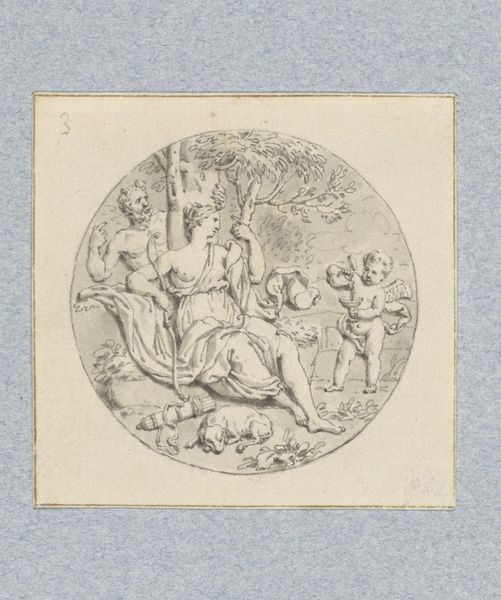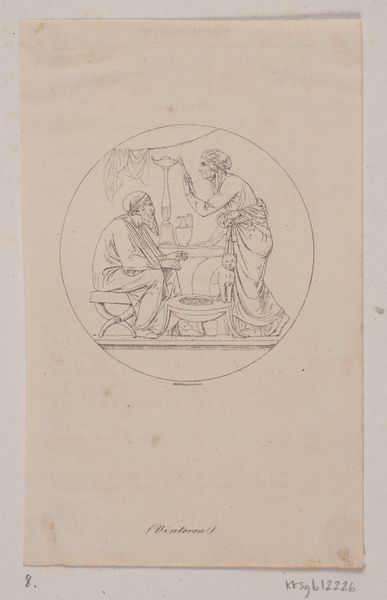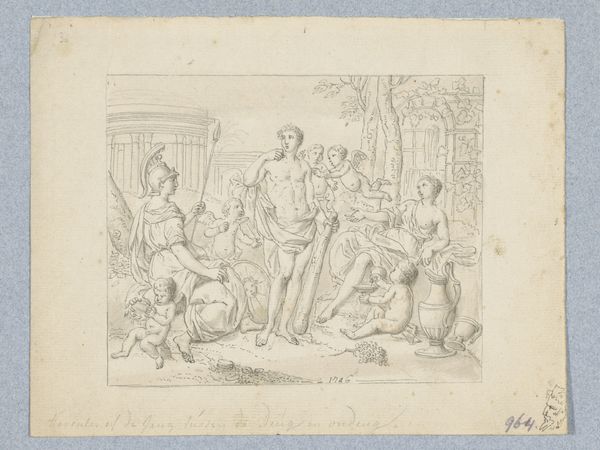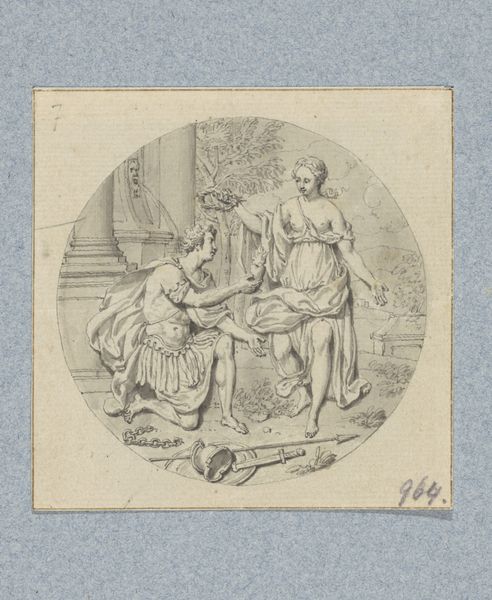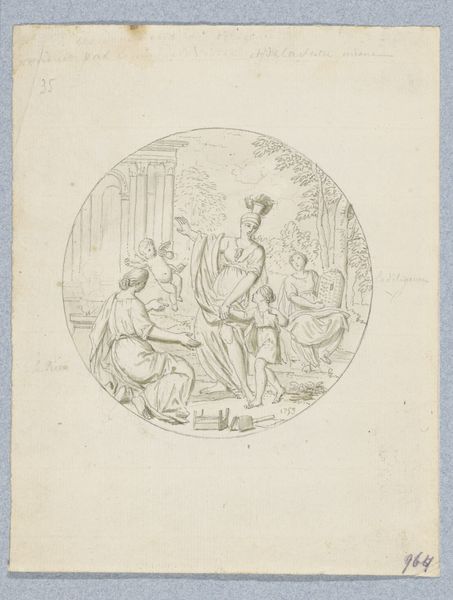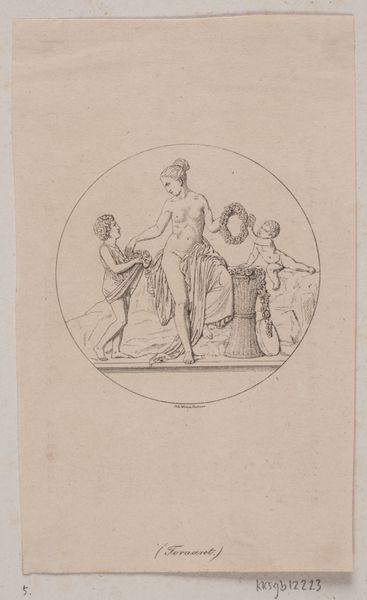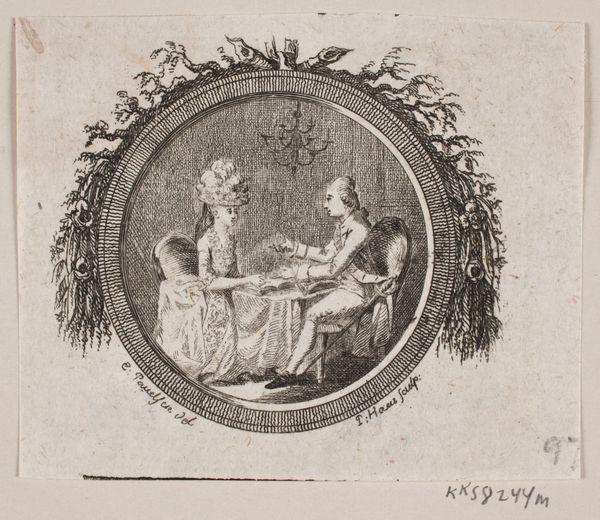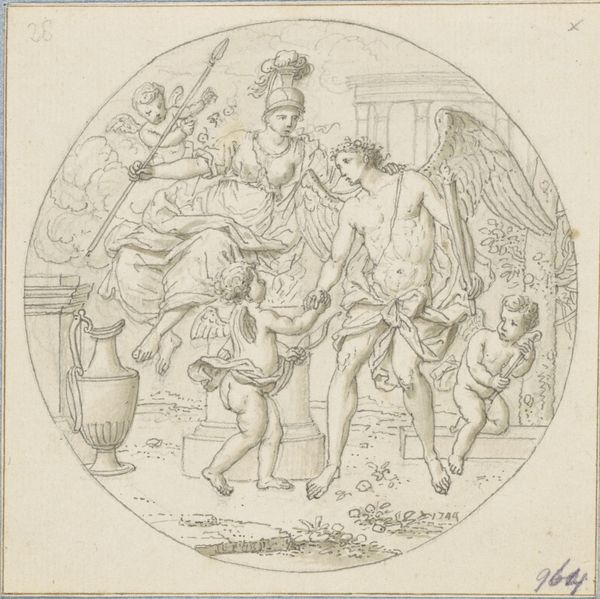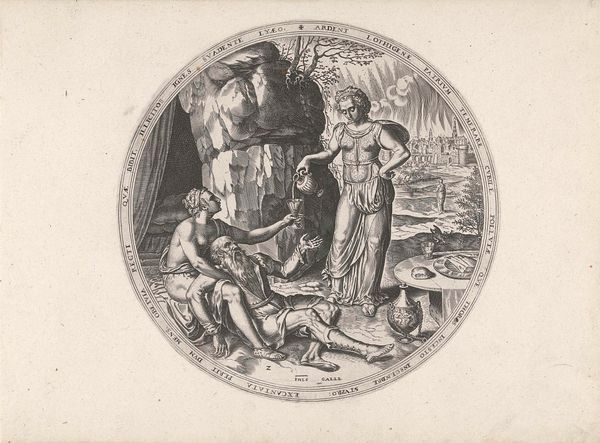
Aankomende militair geeft een zittende man een hand (in doos met 43 tekeningen) 1743
0:00
0:00
louisfabritiusdubourg
Rijksmuseum
Dimensions: height 99 mm, width 98 mm
Copyright: Rijks Museum: Open Domain
Curator: Looking at this pencil and pen drawing, titled "Aankomende militair geeft een zittende man een hand (in doos met 43 tekeningen)," created by Louis Fabritius Dubourg in 1743 and held at the Rijksmuseum, the delicate linework gives the scene an almost dreamlike quality. The moment depicted, a soldier shaking hands with a seated man, is full of potential narratives. Editor: It strikes me as a moment of transition, pregnant with sociopolitical significance. Given the artist’s influences from neoclassicism and Greek and Roman art, how might this simple act of handshaking signify something larger about 18th-century power dynamics or the shifting nature of warfare and leadership at the time? Curator: Well, examining the materiality first, the choice of pen and pencil suggests both precision and a cost-effective means of production, indicative perhaps of its purpose as preparatory work. The circular composition might point us towards the artist's involvement in design work destined for coins or medals. Think of it as the craft inherent in the social reproduction of military status through imagery. Editor: Absolutely. We see in that composition not just an embrace of neoclassical ideals, but a specific historical context shaping the work. The themes of heroism, duty, and the negotiations of power within military and social hierarchies resonate profoundly. That's definitely present in the formal structure. The figure is the hero in Roman gear so how does this fit into historical precedents for visualizing male authority? Curator: It appears more about a contractual negotiation rather than some show of power, it’s a business transaction rendered in classically inspired form. How might such visual messaging about entering the military be deployed? What sort of access to materials was afforded? Editor: We should also consider how images like this potentially reflect and reinforce cultural narratives of masculinity, leadership, and the social order of the 18th century. I can see how this drawing is part of a larger visual language justifying state-sanctioned violence, gender norms, and hierarchies of power and privilege. Curator: All persuasive functions and potentially open for reinterpretation with shifts in the access to means of both production and distribution of new artistic practices. Thank you, Louis Fabritius Dubourg. Editor: Precisely, that act of a military candidate sealing an accord remains relevant when the dynamics of the deal are unpacked and understood through the social relations that underpin it. Thank you.
Comments
No comments
Be the first to comment and join the conversation on the ultimate creative platform.

